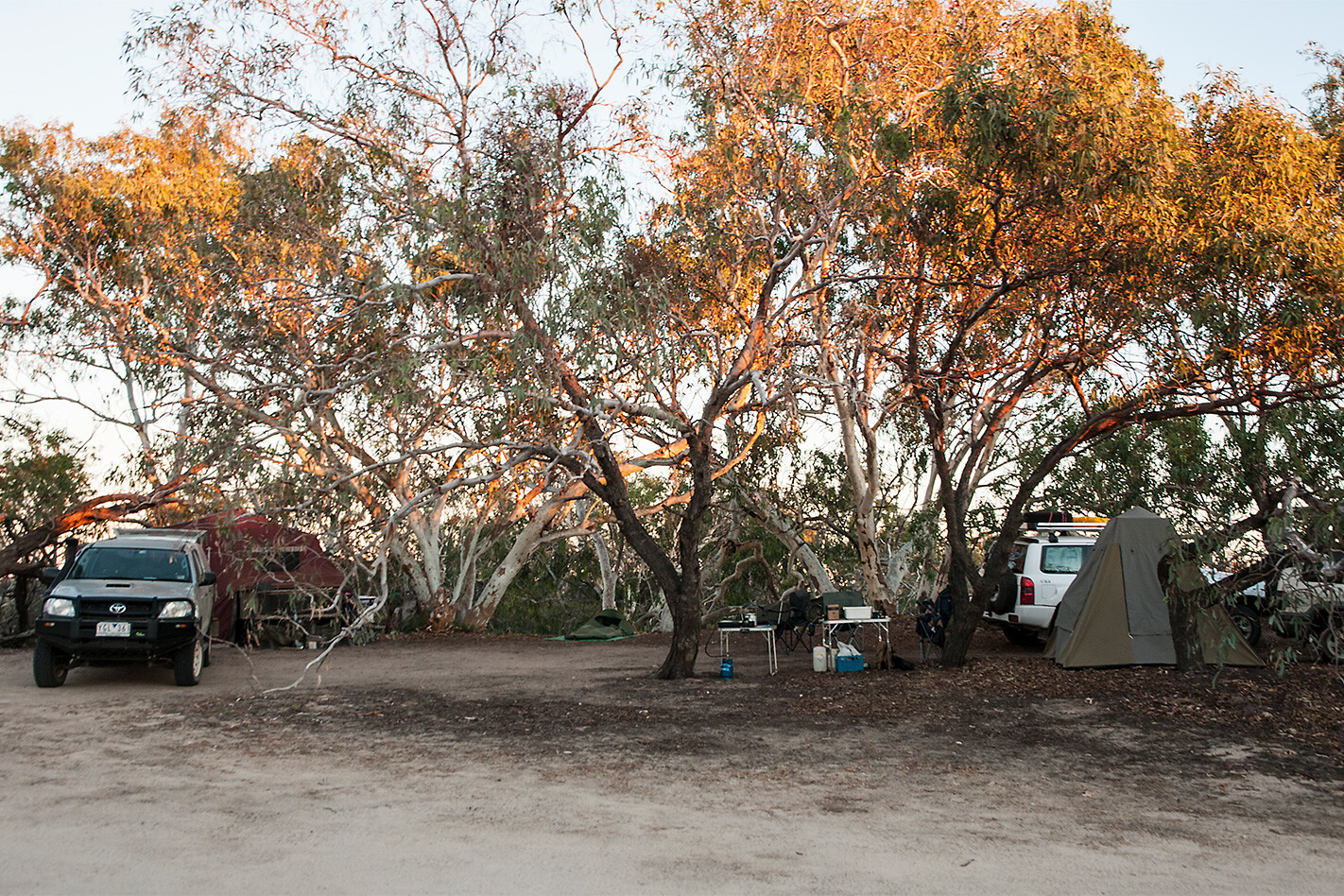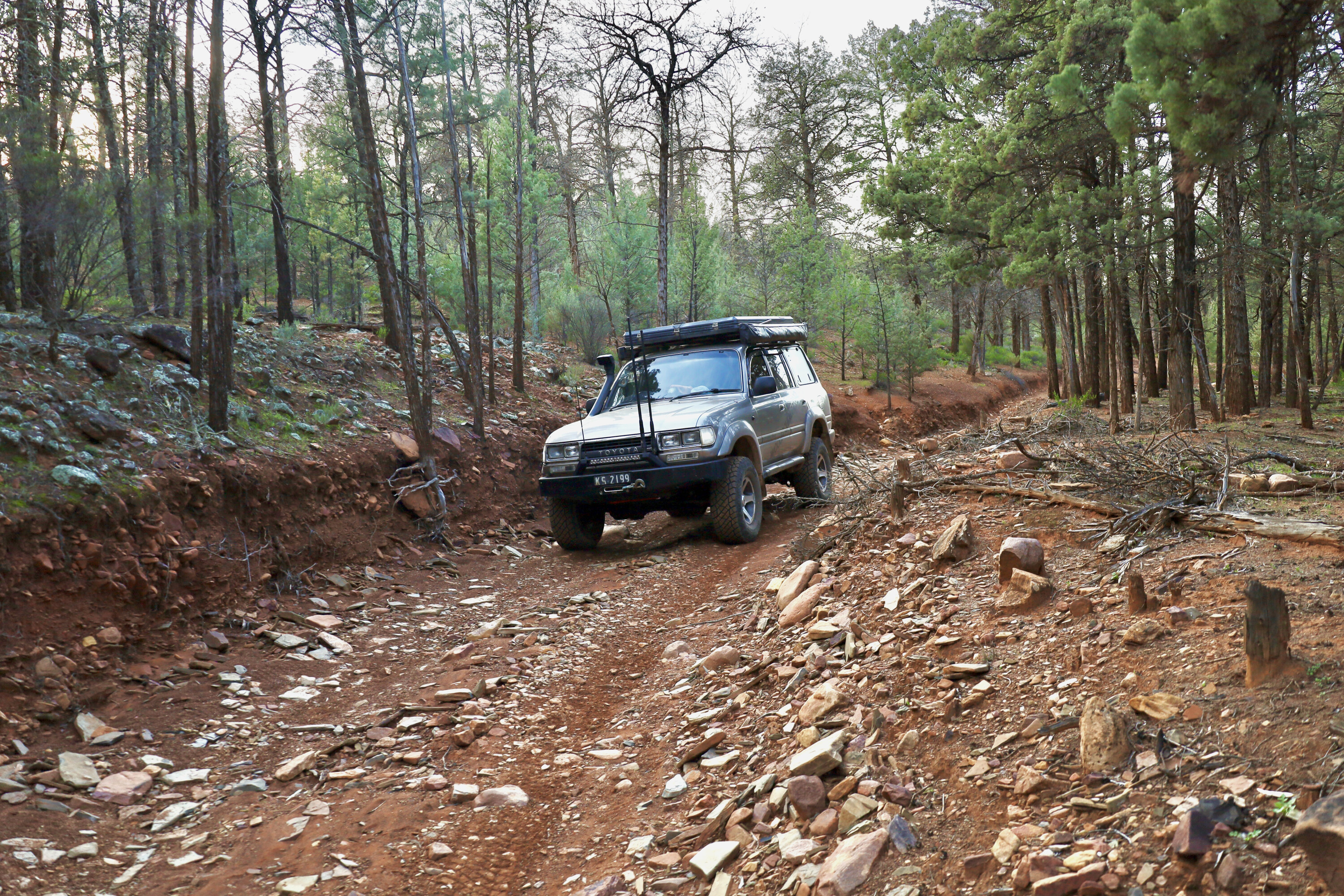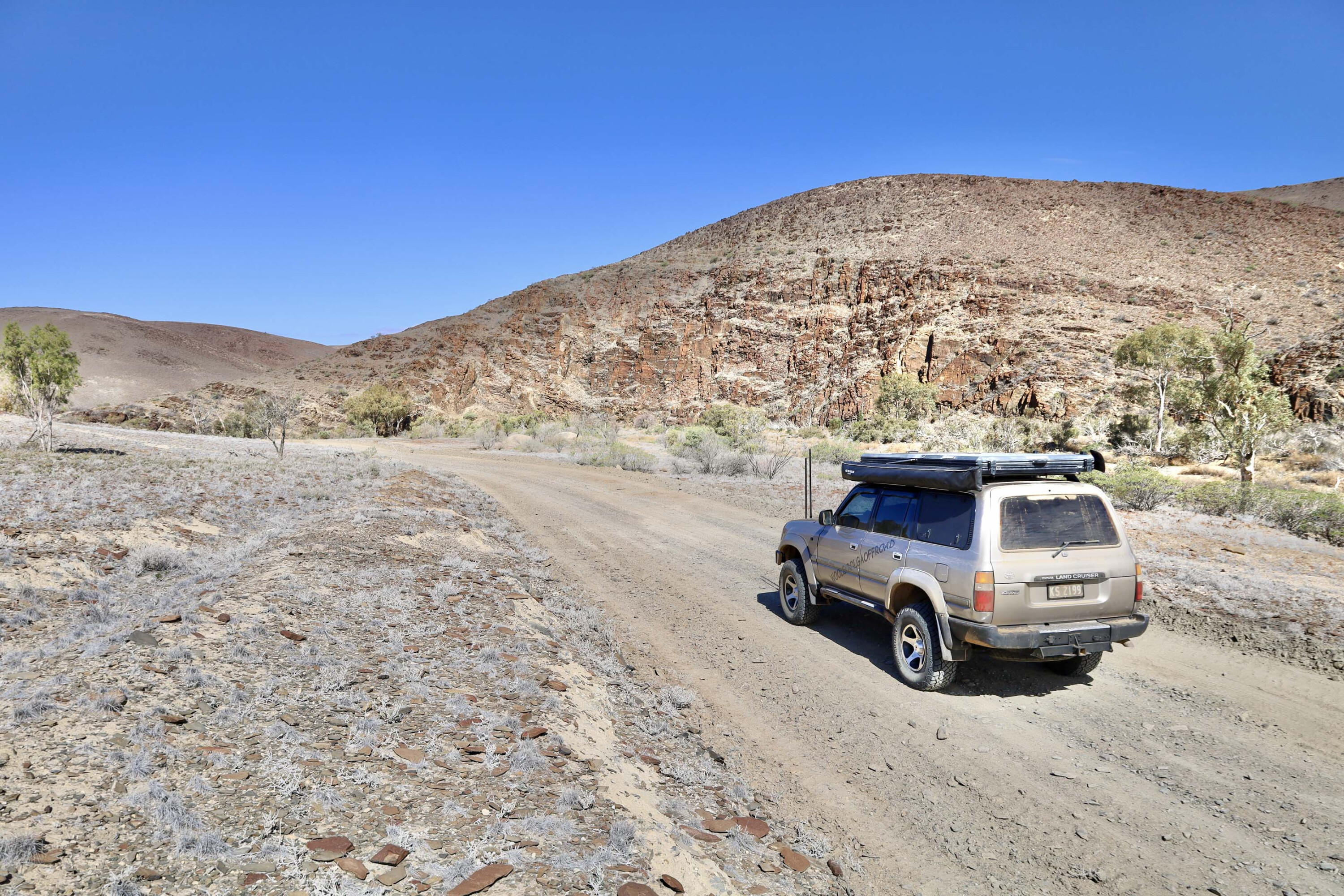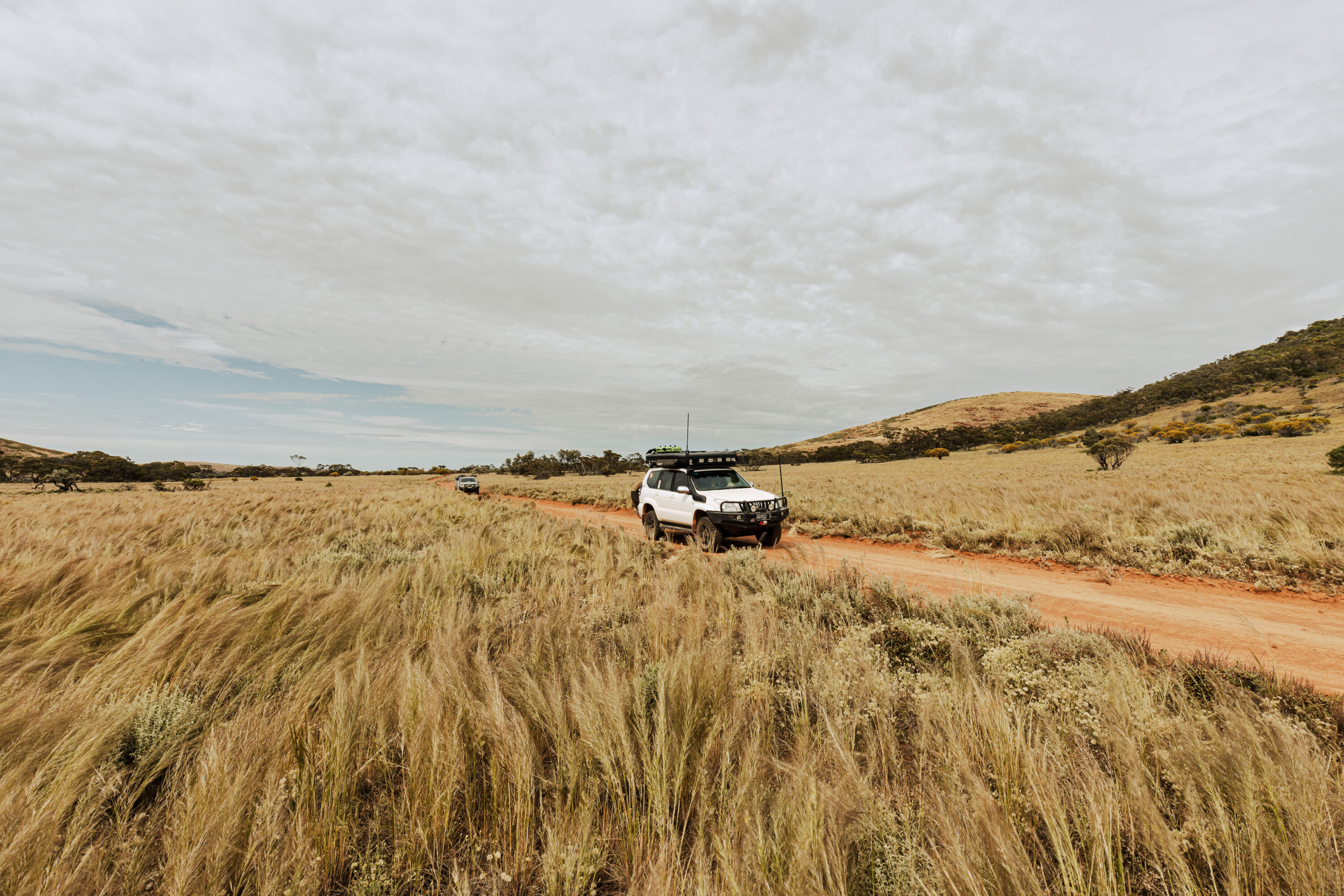The journey to Coongie Lakes National Park can be as extraordinary as the place itself.
In the middle of the Strzelecki Desert in outback South Australia sits an amazing fresh water oasis just waiting to be explored by 4×4 travellers. Adjoining the Simpson Desert to the west, and only 160km from Birdsville to the north, the 28,000 hectare World Heritage listed Coongie Lakes National Park is the jewel of the larger 1.3-million hectare Innamincka Regional Reserve.
The 100km drive to Coongie NP from Innamincka takes travellers on a journey through the desolate landscapes of the park, exposing the stark contrast of landscapes where lush wetlands meet dry dusty dunes. Coongie Lakes is often used as a stop-over, but its many activities make it a great place to camp out beneath the large River Red Gums that line the north-west branch of Cooper Creek.
Bird watching, photography, and canoeing are just some of the activities this unique area has to offer, with the surroundings offering an abundance of beauty and serenity. The peace and solitude provided by the location’s natural beauty is infectious. Motor boats and fishing are prohibited, as are wood fires and generators.
Travelling to Coongie Lakes
Approching Innamincka and Coongie Lakes from the southern capitals, travellers might venture via Hillston in New South Wales.
With showers, toilets, friendly staff and grassy camp sites at just $15 per head, the caravan park at Hillston is the perfect stopover after a long day’s drive. The Hillston township also offers usual basic services found in small rural centres and provides an opportunity for travellers to stock up for the journey ahead.
Dowling Track
From here, the Kidman Way takes you through Bourke to the where you bid farewell to the bitumen. While Dowling Track has a good gravel surface, tyres will still kick up stones. A stone guard can prove invaluable in preventing damage to your trailer and rear window.
Heading for Hungerford, Fords Bridge is the only town along the way. With only a hotel and a population of three, calling it a ‘town’ is an exaggeration. Further on is the deserted settlement of Yantabulla. Now nothing more than a few ramshackle ruins, Yantabulla was once a prosperous town with a hotel, store, Cobb & Co staging post, school, police station and cordial factory.
Hungerford
Hungerford lies on the northern side of the Queensland and New South Wales border and while there is no fuel, food or other services in Hungerford, it has a great hotel. Built in 1873, The Royal Mail was originally a Cobb & Co staging post. After a night at the Hungerford campground, which offers showers, toilet and laundry facilities for $10 per person per night, it’s an easy drive to explore Currawinya National Park which adjoins the town.
Currawinya National Park
Currawinya NP has two fresh water lakes, Lake Kaponyee and Lake Numulla, as well as a salt lake, Lake Wyala. Kayaking, canoeing and swimming are permitted in Lake Numulla, but the other lakes have some restrictions on recreational activities. The sandy roads in the park are an easy drive in dry conditions but often become impassable after heavy rain.
The Granites are an outcrop of boulders in the centre of Currawinya NP. While not exactly on a par with Uluru, they’re still worth a visit. The country in this area is largely Brigalow Scrub, a type of Acacia which plagued the early settlers — once cut up, Brigalow tends to grow back thicker than before. Also common to the area is the Yapunyah tree, a eucalypt that grows to approximately 15 metres with beautiful ochre coloured smooth bark on its upper trunk. Yapunyah produces excellent honey and when the trees are in flower, bee hives can be seen dotted around the park.
Thargomindah Waterhole camping
Following the Dowling track to Thargomindah Waterhole, 163km to the north-west of Currawinya, the Brigalow Scrub gradually gives way to open grassland. Thargomindah Waterhole offers travellers flat, sandy bush camping sites just outside of the town. Facilities, fuel and supplies can be found in Thargomindah before striking out for Innamincka, 363km to the west via The Adventure Way. It’s worth noting that this is the last chance to purchase fresh food for some time. While frozen meat and bread along with dry goods can be purchased in Innamincka, fresh produce cannot.
Innamincka
The bitumen stops for good at the South Australian border and is replaced by badly corrugated gravel for the last 30km into Innamincka. The town camp ground is the Common on Cooper Creek which has drop toilets and a camp fee of $5 per vehicle per night. Coin operated showers and laundry are available adjacent to the Innamincka Hotel and Trading Post. Another camping option for those wishing something less civilised is Cullyamurra Waterhole 14km east of Innamincka. The camp site has drop toilets only and an SA Desert Parks Pass is required to visit.
Coongie Lakes NP entry
Access to Coongie Lakes NP requires an entry pass that can be purchased from the Trading Post ($10 entry fee plus $18 per person per night). This area is part of the Cooper Basin, Australia’s largest onshore oil and gas field. Mining companies maintain some of the 135km Coongie Track from Innamincka to Coongie Lakes, and as a result, the track is usually in good condition and an easy drive. The Coongie Lakes system are semi-permanent ephemeral lakes that are only two metres deep and are reliant on flood waters of the wet season flowing down the Cooper from Queensland. This is a land of contrast and while the wetlands and lakes dry up during long periods of drought, after heavy rainfall the Cooper can flood and spill out over the surrounding country making access to the park impossible. If planning a trip to the park, it’s wise to check conditions with the Port Augusta office of the South Australian Department of Environment Water and Natural Resources.
Coongie Lakes camping
On reaching Coongie Lakes, visitors have a choice of camping on the shoreline of Coongie Lake or to stay on the western side of the dunes and camp by Cooper Creek. While camping under the Coolabah trees around the lake arguably provides a better outlook, the Cooper Creek site has the benefit of drop toilets nearby. The access track to the lake runs through loose sand with a hard base so it’s not a difficult drive.
Wildlife
Both the National Park and reserve were listed in 1988 to protect the internationally recognised freshwater wetlands of the Cooper Creek floodplain. These wetlands are a magnet to native birdlife and form an important feeding, resting and breeding ground. More than 70,000 birds have been observed in residence at the park at one time, and in excess of 200 different bird species have been sighted in its sand dunes.
The birdlife, beautiful sunrises and sunsets each add to the serenity of Coongie Lakes National Park and are bound to make a lasting impression on any outback traveller.





